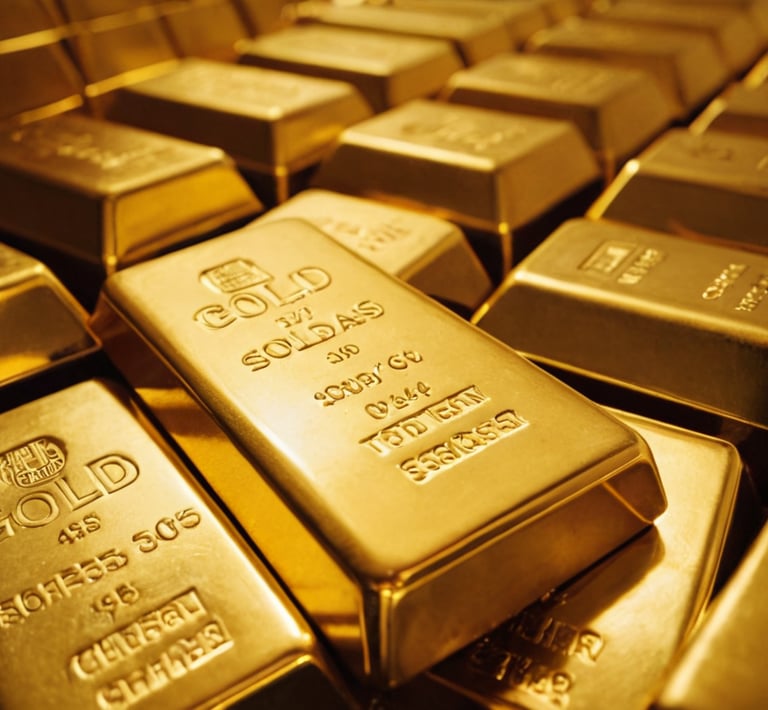

Gold has been cherished since ancient times for its beauty, rarity, and versatility. Its distinctive bright yellow hue, combined with remarkable strength and resistance to corrosion, makes it an ideal material for jewelry and decorative items. Beyond its ornamental value, gold is also a favored investment, often seen as a safe haven during periods of economic uncertainty. People can invest in gold in various forms, such as physical assets like jewelry, coins, and bars, or through financial instruments like gold exchange-traded funds (ETFs). The price of gold is influenced by a range of factors, including global economic conditions, geopolitical events, and international demand. In many cultures, gold holds deep cultural significance and is traditionally associated with prosperity and wealth. Thanks to its enduring allure and universal appeal, gold remains one of the most sought-after metals in the world.
Gold
Forms of Gold
Jewelry


Gold jewelry remains a popular and timeless choice for adornment, prized for its beauty, durability, and deep cultural significance. Crafted from pure gold, often alloyed with metals such as silver or copper, it is available in various hues, including yellow, white, and rose gold. This versatility allows artisans to create exquisite designs for rings, necklaces, bracelets, and earrings, suitable for both special occasions and everyday wear. Beyond its aesthetic appeal, gold jewelry symbolizes wealth and status in many cultures, serving as a meaningful gift during significant celebrations, such as weddings and anniversaries. Its intrinsic value and enduring charm make gold jewelry a cherished accessory that can be passed down through generations.
Coins
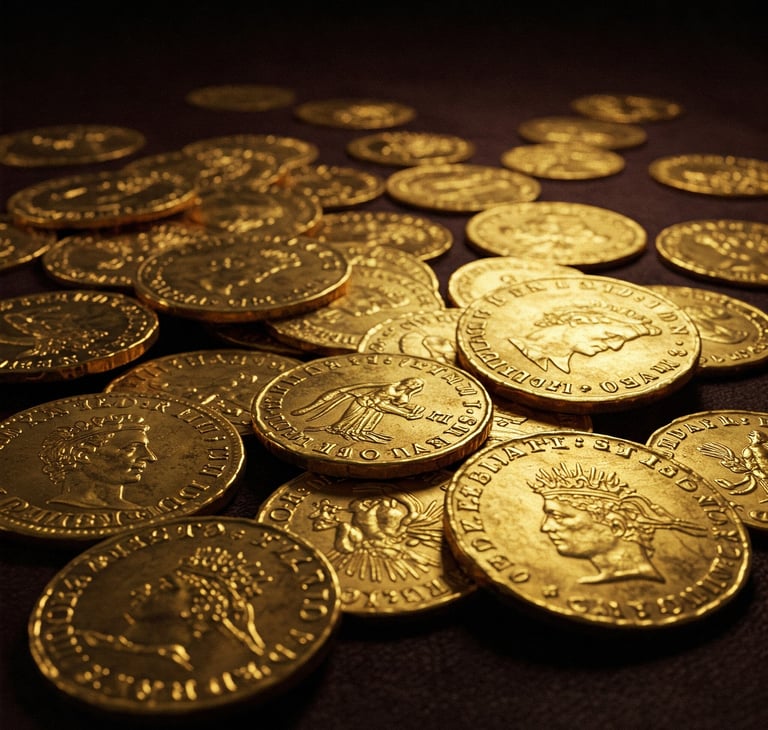

Gold coins, usually minted from high-purity gold by government mints or private organizations, are prized both as investments and as symbols of wealth. They come in a range of sizes, from as small as 1 gram to over 1 ounce, making them accessible to a wide variety of investors. Gold coins often feature detailed designs, including historical figures, national emblems, or commemorative motifs, which not only add to their visual appeal but also attract collectors. Their value is primarily determined by the prevailing market price of gold, making them a popular choice for those looking to hedge against inflation and economic instability. Gold coins are also easy to store, trade, and gift, offering flexibility for both personal use and as a component of a diversified investment portfolio.
Bars


Gold bars, produced by commercial refiners or government mints, are a favored choice for investors seeking to own precious metals in their purest form. Typically containing between 99.5% and 99.99% pure gold, these bars are considered a reliable store of value. They come in a variety of weights, ranging from as little as 1 gram up to 1 kilogram, catering to different investment preferences and budgets. Gold bars are especially popular among bulk buyers because they generally have lower premiums over the market price of gold compared to coins or jewelry. Their high purity, ease of storage, and portability make gold bars a practical investment option for those looking to hedge against inflation and protect their wealth during times of economic uncertainty.
Gold ETFs
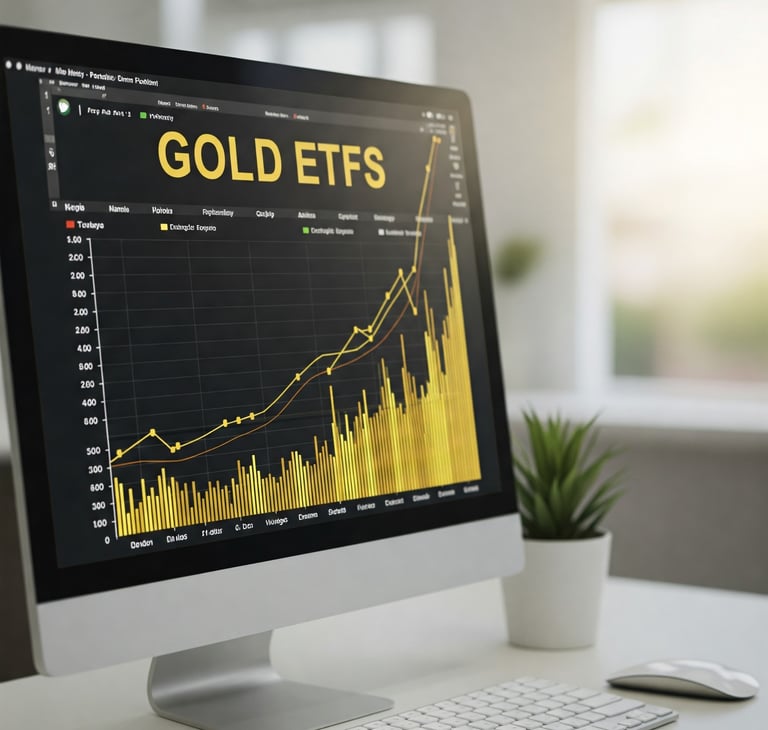

Gold Exchange-Traded Funds (ETFs) provide investors with a convenient way to invest in gold without the need to physically buy or store it, as their value is directly tied to the price of gold. By purchasing shares in a gold ETF, investors gain exposure to the fund’s gold holdings, making it an efficient option for those seeking the safety of gold as an asset. Gold ETFs eliminate the concerns of storage and security that come with owning physical gold, while also offering high liquidity since they can be easily bought and sold on stock exchanges. Additionally, gold ETFs typically have lower management fees compared to other gold investment options, making them a cost-effective way to diversify a portfolio. These advantages make gold ETFs appealing to both new and experienced investors who want to add gold to their investment strategy without the complications of handling physical bullion.
Investment in Gold
Physical Gold
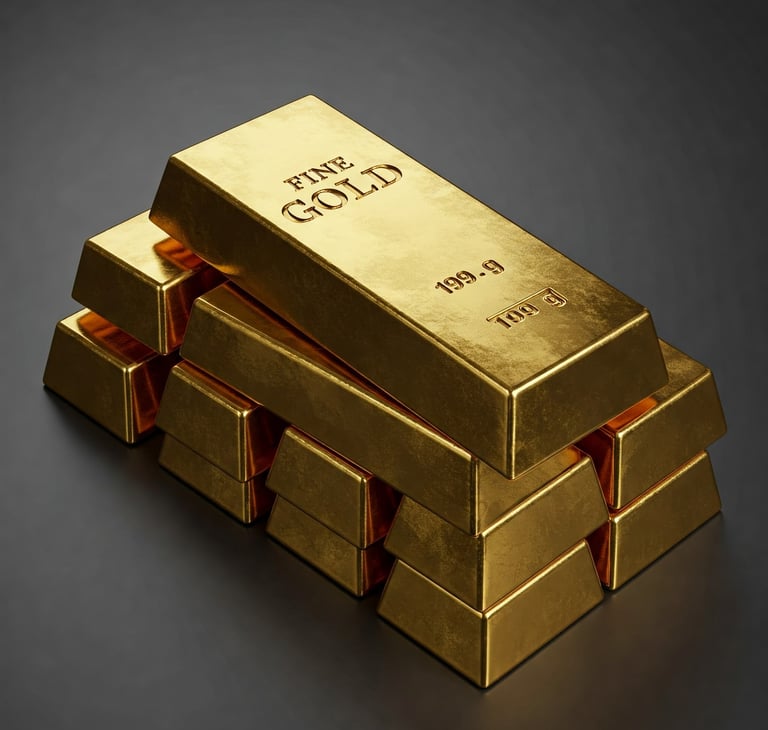

Investing in physical gold means purchasing tangible assets such as bars, coins, or jewelry, which gives you direct ownership of a potentially appreciating resource. Physical gold is often valued for its ability to provide stability and security, serving as a hedge against inflation and economic uncertainty. However, owning physical gold also comes with the responsibility of ensuring proper storage and security to protect against loss or theft. Additionally, buying physical gold typically involves paying a premium over the current market price due to manufacturing, making, and delivery costs. Despite these considerations, many people are drawn to physical gold for the satisfaction and reassurance that comes from personally owning a valuable and enduring asset.
Gold ETFs
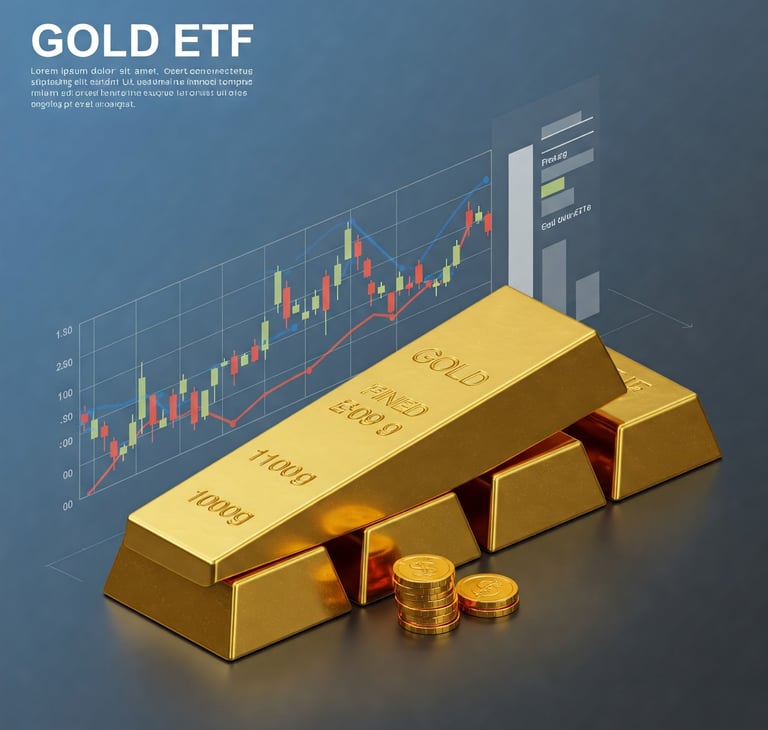

Gold exchange-traded funds (ETFs) provide a liquid and convenient way to invest in gold without the need to physically store or secure the metal. By purchasing shares that represent a specific quantity of gold held by the fund, investors can gain exposure to gold prices without worrying about storage costs, insurance, or authentication. These ETFs can be easily traded on stock exchanges during market hours, offering quick entry and exit and greater liquidity compared to physical gold. Additionally, gold ETFs typically involve lower transaction and management fees than the premiums associated with buying physical gold. They also serve as an effective tool for portfolio diversification and act as a hedge against inflation and market volatility, since gold often performs well during economic uncertainty.
Gold Futures
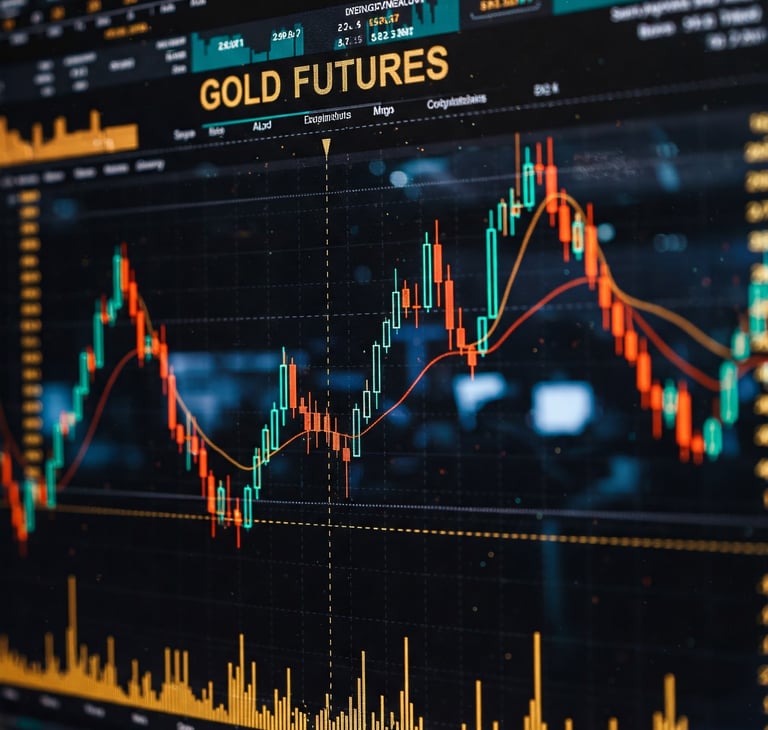

Gold futures are contracts that allow you to agree to buy or sell a specific quantity of gold at a predetermined price on a future date. These contracts are traded on specialized exchanges, such as the Multi-Commodity Exchange (MCX) in India. Investors and traders use gold futures for various purposes: some use them to hedge against fluctuations in gold prices, while others aim to profit by speculating on whether the price will rise or fall. Importantly, trading gold futures does not require you to own any physical gold. While gold futures offer the advantage of investing in gold with a relatively small initial margin, they also carry significant risk, as you can lose money if the market moves against your position.
Market Factors Influencing Gold Prices
Supply and Demand


The price of gold is largely influenced by the balance between supply and demand. On the supply side, gold is primarily obtained through mining and recycling, with annual mining output limited by natural and regulatory constraints, causing supply to fluctuate. Demand for gold comes from various sectors, including investment, jewelry, and currency reserves. Jewelry demand is particularly strong in countries like India and China, where gold holds significant cultural importance. Additionally, during periods of economic uncertainty or geopolitical instability, investors often turn to gold as a safe-haven asset, driving up demand and prices. Other factors such as inflation, currency exchange rates—especially the strength of the US dollar—interest rates, and government policies also impact gold prices. When demand exceeds supply, gold prices rise, whereas an oversupply or weakened demand can cause prices to fall. This complex interaction makes gold prices sensitive to both global economic conditions and local market dynamics.
Economic Conditions
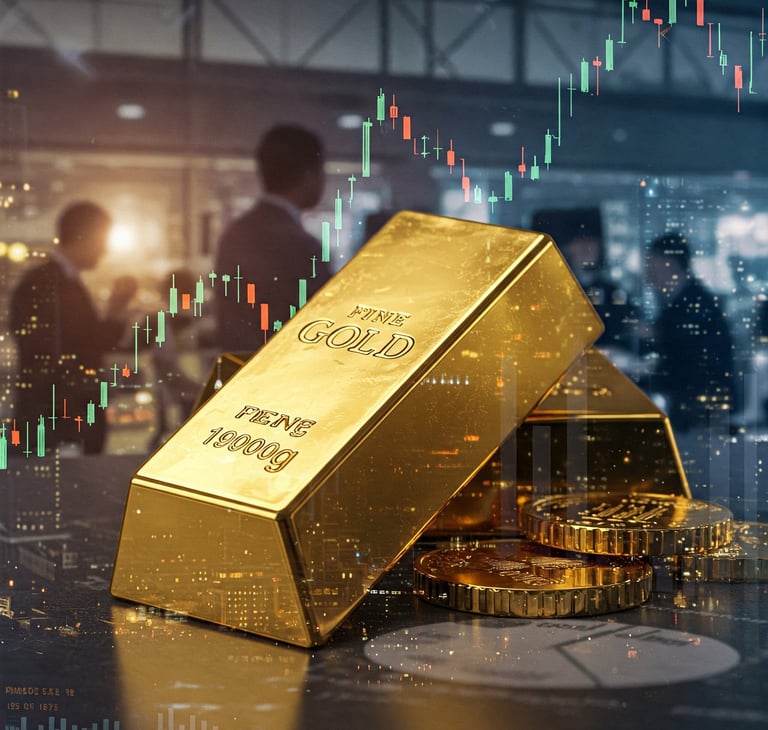

Economic conditions have a strong influence on gold prices, particularly during periods of uncertainty or instability. When economies face challenges such as inflation, recession, or currency fluctuations, investors often turn to gold as a safe-haven asset to protect their wealth. This surge in demand can drive gold prices higher as people seek security against potential economic downturns. Conversely, when economic conditions are strong—with low inflation, stable currencies, and positive growth—gold tends to become less attractive, often leading to lower prices. Key economic indicators like GDP growth, employment rates, and central bank monetary policies also play a significant role in shaping gold price trends, as they impact investor sentiment and the overall demand for gold as an investment.
Interest Rates
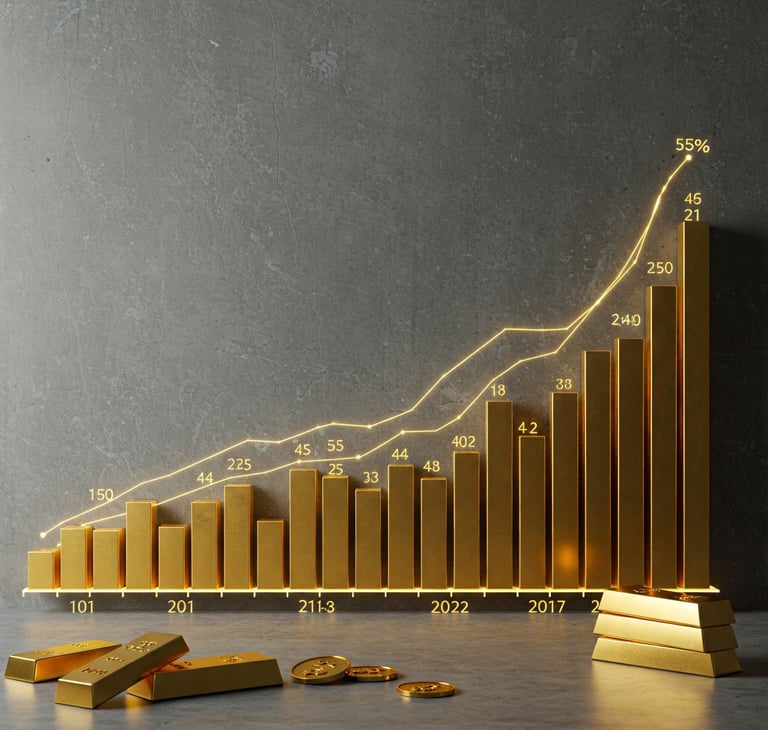

Gold prices and interest rates typically share an inverse relationship: when interest rates decline, gold prices tend to increase, and when interest rates rise, gold prices often fall. This occurs because higher interest rates make income-generating assets like bonds and savings accounts more attractive, reducing the appeal of gold, which does not yield interest or dividends. Consequently, investors may shift their funds away from gold toward these alternatives, leading to decreased demand and lower gold prices. On the other hand, when interest rates are low, the opportunity cost of holding gold diminishes, making it a more appealing safe-haven asset, especially during times of economic uncertainty. This increased demand can drive gold prices upward. Additionally, real interest rates—adjusted for inflation—also influence gold’s attractiveness, with negative real rates further boosting its appeal as a store of value. Overall, fluctuations in interest rates significantly impact gold prices by shaping investor preferences and market dynamics.
Geopolitical Events


Gold prices are heavily influenced by geopolitical events around the world. During periods of international tension, conflict, or crisis, investors often turn to gold as a safe-haven asset to protect their wealth. This surge in demand typically drives gold prices higher, as seen during major global conflicts or economic crises. Events such as diplomatic standoffs, military actions, or the imposition of sanctions can create economic uncertainty, prompting more investors to buy gold. Conversely, during times of peace and global stability, gold tends to lose some of its appeal, which can lead to lower prices. Overall, geopolitical developments play a significant role in shaping the value of gold, making it a favored choice for those seeking security during uncertain times.
